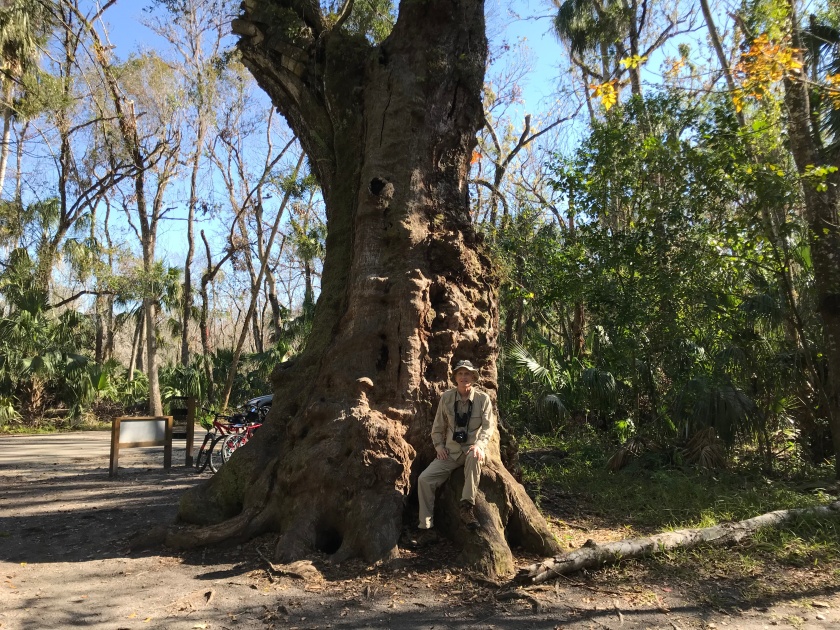What is a hammock? I always thought of it as a shady place to rest. While hiking at Highlands Hammock State Park, near Sebring, I walked through the oldest hammock in Florida. A hammock is a stand of trees growing in an elevated area surrounded by wetlands. Think of it as ecological island where plants and animals abound.
While camping at the park, Herb, Buddy, and I traversed trails through wild orange trees, ancient live oaks, and towering Sabal palms.

These wild oranges look almost ready to eat. Early Spanish explorers brought orange seeds to Florida. Seville oranges can be found throughout the state from Jacksonville to Key West. Wild oranges contain a large amount of seeds and taste sour. Yet, they are a valuable ingredient in orange marmalade, and can also be substituted in recipes which call for lemons.

The park contained many old oak trees, living and dead. The center of an old oak often rots away from disease, parasites, or fire leaving a hollow space with little skeletal support.

Tree surgeons attempted to save this oak by supporting it with cement blocks. It didn’t work. The tree died, but an artifact remains for now, until the wood decomposes.
 My favorite tree is the Sabal palm. In Highlands Hammock many of these trees grow between seventy and one hundred feet tall. Upon my arrival home, I researched information about the life span of palm trees. I discovered palms do not have rings, so their age is determined by their height, rate of leaf production, and visible scars from fallen leaves.
My favorite tree is the Sabal palm. In Highlands Hammock many of these trees grow between seventy and one hundred feet tall. Upon my arrival home, I researched information about the life span of palm trees. I discovered palms do not have rings, so their age is determined by their height, rate of leaf production, and visible scars from fallen leaves.
According to botany professor, Barry Tomlinson, palms may be the longest living trees if you consider the age of actively dividing cells in their trunks. In most long-lived trees the trunk is composed of rings of woody tissue, but only the cells of the inner ring actively divide. Each year these active cells are replaced with new cells and another ring is added to the tree. That’s why oak trees not only grow taller, they grow wider too. An oak tree might be one thousand years old, but its active cells are much younger.
In contrast, the tissues in the trunk of a palm are laid down in vascular bundles with the oldest cells in the trunk and the youngest in the top. However, the oldest cells flourish at full capacity throughout the life of a palm tree, continuing to transport water and nutrients to the top leaves for centuries.
This reminded me of Psalm 92:12 which states:
The righteous (faithful) will flourish like the palm tree.
Good food for thought. Compared to other trees, palms are unique because all of their cells are flourishing throughout their old age. I’m delighted when science confirms the word of God. How did the psalmist know that the cells of palm trees flourish?
Like all baby-boomers, we have more years behind us than ahead. As we approach our “golden years”, don’t we still desire to flourish like the palm tree?




How interesting to relate the scientific findings with Scripture! I have no doubt that the two would align so well. Brava!
LikeLike
Great story about a fabulous State Park. Nature is a wondrous thing. So glad you enjoyed your time there.
LikeLike
Creation reflects the Creator. Nature brings me closer to God. Thanks for reading, fellow traveler.
LikeLike